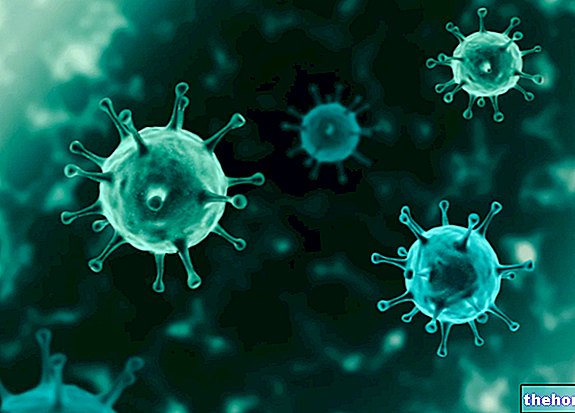PLEASE NOTE: MEDICINAL PRODUCT NO LONGER AUTHORIZED
TREDAPTIVE ® is a drug based on nicotinic acid and laropiprant.
THERAPEUTIC GROUP: Hypolipidemics - Synthetic analogue of nicotinic acid

Indications TREDAPTIVE ® Nicotinic acid and laropiprant
TREDAPTIVE ® is used in the treatment of mixed dyslipidemia, characterized by high levels of triglycerides and LDL cholesterol, and in the treatment of heterozygous familial hypercholesterolemia.
TREDAPTIVE ® should be administered synergistically with statins, or as monotherapy, to patients unresponsive to treatment with HMG-CoA reductase inhibitors.
Like any lipid-lowering treatment, taking TREDAPTIVE ® must be preceded and accompanied by a lipid-lowering diet and constant physical exercise.
Mechanism of action TREDAPTIVE ® Nicotinic acid and laropiprant
TREDAPTIVE ® taken orally, is absorbed in the gastrointestinal tract, with a plasma peak of its active ingredients after about 4 hours. The bioavailability, both for nicotinic acid and for laropiprant, is around 70% of the dose taken. Both active principles undergo a first pass metabolism: at low doses, nicotinic acid gives rise to nicotinamide, while once saturated this path gives rise to nicotinuric acid (by conjugation with glycine); laropiprant is instead conjugated to acyl glucuronide, with partial reduction of its biological functionality.
The lipid-lowering effects of the drug are due solely to the action of nicotinic acid. Upon reaching the adipose tissue bound to glycine, this active ingredient can in fact interact with orphan receptors and - through cellular events not yet clarified - inhibit lipolysis and the release of fatty acids into the blood stream.
The reduced inflow of non-conjugated fatty acids to the liver causes a significant reduction in the hepatic synthesis of triglycerides and lipoproteins (VLDL and LDL), helping to rebalance the lipidemic profile.
All these events - accompanied by an increase in HDL cholesterolemia and the gradual replacement of small and dense (strongly atherogenic) LDL cholesterol particles with larger lipoproteins - guarantee a reduction in cardiovascular risk.
The high concentrations of nicotinic acid necessary to guarantee the lipid-lowering effect are systematically accompanied by an unpleasant side effect, supported by the increased production of prostaglandin D2 and characterized by hot flashes. Laropiprant acts at this level, blocking the DP1 receptor for prostaglandin D2 and preventing the cutaneous vasodilatory action from causing flushing.
Once the therapeutic effect is over, nicotinic acid is eliminated mainly in the urine, while laropiprant is eliminated mainly in the faeces.
Studies carried out and clinical efficacy
THE MEANING OF THE NICOTINIC ACID / LAROPIPRANT ASSOCIATION
Expert Opin Pharmacother. 2010 Jul; 11: 1715-26.
Laropiprant plus niacin for dyslipidemia and prevention of cardiovascular disease.
Olsson AG.
Nicotinic acid is one of the most effective drugs in reducing the cardiovascular risk associated with hyperlipidemia. This characteristic is given above all by the possibility of significantly increasing HDL cholesterol levels. Despite this, nicotinic acid recognizes limits essentially due to high required dosage, which very often causes side effects such as the classic hot flashes. The association with laropiprant allows to significantly reduce the side effects of nicotinic acid, safeguarding its therapeutic efficacy.
2.THE EFFECTIVENESS OF TREDAPTIVE
Int J Clin Pract. 2008 Dec; 62: 1959-70.
Lipid-modifying efficacy and tolerability of extended-release niacin / laropiprant in patients with primary hypercholesterolaemia or mixed dyslipidaemia.
Maccubbin D, Bays HE, Olsson AG, Elinoff V, Elis A, Mitchel Y, Sirah W, Betteridge A, Reyes R, Yu Q, Kuznetsova O, Sisk CM, Pasternak RC, Paolini JF.
The efficacy of the combination of extended release nicotinic acid and laropiprant has been evaluated in nearly 1500 patients undergoing therapy. The results obtained after 20 weeks of treatment with 2 grams of nicotinic acid and 40mg of laropiprant were quite positive. Yes. in fact, an average reduction of LDL cholesterol of 18%, of triglycerides of 26% and of total cholesterol of 8% is recorded, while HDL cholesterol has increased by 20%.
3. NICOTINIC ACID / LAROPIPRANT / SIMVASTATIN COMBINATION
Expert Opin Investig Drugs. 2010 Mar; 19: 437-49.
A new paradigm for managing dyslipidemia with combination therapy: laropiprant + niacin + simvastatin.
Yiu KH, Cheung BM, Tse HF.
The association of simvastatin to the nicotinic acid / laropiprant combination could complete the therapeutic efficacy of the lipid-lowering treatment, guaranteeing a synergistic and complementary action. In fact, while nicotinic acid could guarantee a significant increase in HDL cholesterolemia, simvastatin could reduce that LDL. Therefore, this therapeutic combination would guarantee a significant reduction in cardiovascular risk. One of the most important limitations of such therapy lies in the potential increased risk of developing liver disease and rhabdomyolysis.
Method of use and dosage
TREDAPTIVE ® Modified-release tablets containing 1000 mg of nicotinic acid and 20 mg of laropiprant: in the first four weeks of treatment the dosage should be one tablet per day, and then increase to 2 tablets per day taken in a single administration.
The intake of TREDAPTIVE ® is preferable in the evening, during dinner or before going to bed, in order to preserve the pharmacokinetic properties of the product.
Before and during the pharmacological intervention with TREDAPTIVE ® it is advisable to follow a healthy lifestyle and a low-fat food plan.
IN ANY CASE, BEFORE TAKING TREDAPTIVE ® Nicotinic acid and laropiprant - YOU NEED THE PRESCRIPTION AND CONTROL OF YOUR DOCTOR.
Warnings TREDAPTIVE ® Nicotinic acid and laropiprant
Before and while taking TREDAPTIVE ® it is advisable to pursue non-pharmacological interventions (hypolipidic diet and physical activity) aimed at decreasing the lipid content in the blood. If it is necessary to administer the drug, the doctor should investigate the liver function and muscle of the patient, evaluating whether or not to undertake therapy in the event of impaired liver and muscle function, or predisposition to the onset of such pathologies. These precautions are necessary in order to avoid adverse reactions affecting the liver and skeletal muscle, documented in the literature and particularly frequent in case of concomitant administration of HMG-CoA reductase inhibitors.
Given the urinary excretion of nicotinic acid, and its effects on some hematoclinical parameters known, before and during treatment it would be advisable to monitor the functional capacity of the kidneys, fasting blood glucose, uric acid and phosphate concentrations, and platelet count. .
The presence of lactose among the excipients of TREDAPTIVE ® could be responsible for gastrointestinal adverse drug reactions, common in patients with glucose / galactose malabsorption or lactase enzyme deficiency.
Although no interference with the patient's normal perceptive abilities has been described, the presence of dizziness - frequent especially at the start of treatment with TREDAPTIVE ® could compromise normal ability to drive vehicles and use machines.
PREGNANCY AND BREASTFEEDING
The intake of TREDAPTIVE ® during pregnancy and breastfeeding is not recommended, given the absence of studies useful to understand the safety profile of the drug on the health of the fetus, the newborn and the pregnant woman.
Interactions
The presence of two different active ingredients significantly increases the possible interactions that the drug TREDAPTIVE ® can undertake with other biologically active molecules.
In fact, at high doses, nicotinic acid can interact with:
- Antihypertensive drugs of various kinds, enhancing their hypotensive efficacy;
- Statins, increasing the lipid-lowering effect;
- Bile acid sequestering agents, losing part of its active share.
The interactions observed for laropiprant were neither pharmacokinetic nor clinically significant.
Contraindications TREDAPTIVE ® Nicotinic acid and laropiprant
TREDAPTIVE ® is contraindicated in case of impaired liver or kidney function, in case of active peptic ulcer, arterial bleeding and hypersensitivity to one of its compounds.
Undesirable Effects - Side Effects
Adverse reactions reported by patients receiving TREDAPTIVE ® therapy were generally transient and minor.
Hot flashes, dizziness, headache, diarrhea, nausea, vomiting, erythema, itching, skin rashes and changes in blood parameters of transaminases, glycaemia and uric acid, were the most described side effects.
Hypersensitivity reactions and clinically more relevant side effects were found only in a few cases, generally in categories of patients defined at risk.
Note
TREDAPTIVE ® can only be sold under medical prescription.
The information on TREDAPTIVE ® Nicotinic acid and laropiprant published on this page may be out of date or incomplete. For a correct use of this information, see the Disclaimer and useful information page.




.jpg)


















-nelle-carni-di-maiale.jpg)




